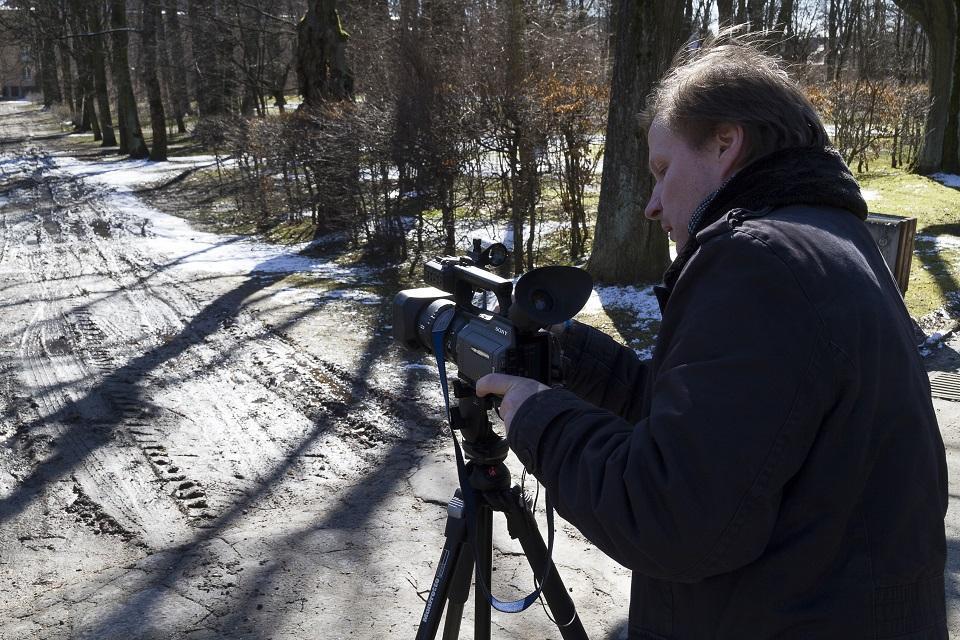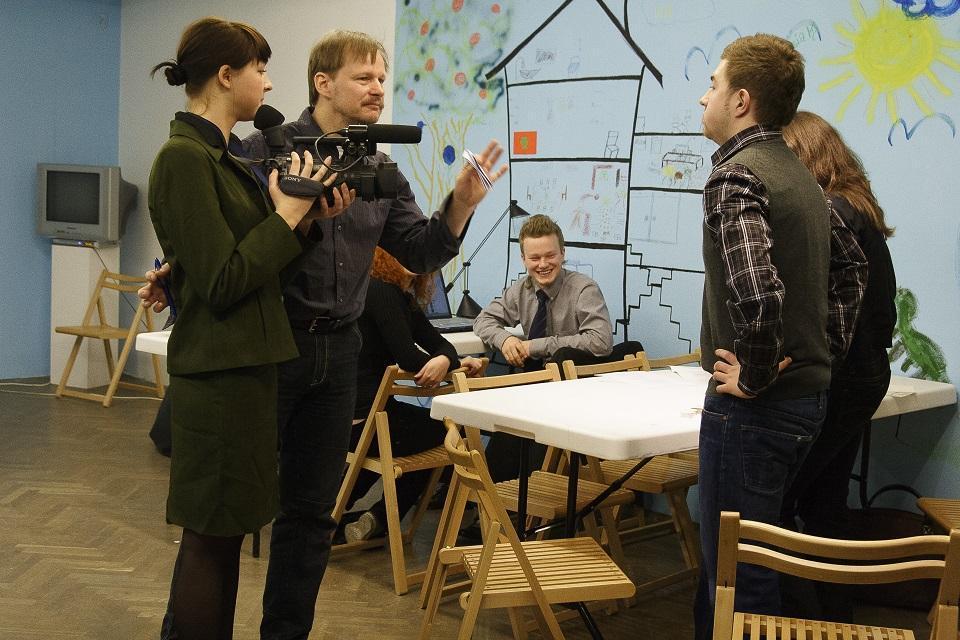Jacek Malinowski – Białystok Trilogy – artist talk and film screening
Made within the frame of film workshops Plac Zabaw Arsenał [Arsenal Playground] at the Arsenal Gallery in Bialystok in 2009-13, the cycle of three films is stylistically consistent with Malinowski’s work, although the boundary between documentary and narrative is clearer here and the artist plays with different formulas.
We meet the little protagonists from Planty again in the film Kryzys w mojej głowie [Crisis in My Head] (2009). They have grown up and are beginning their independent lives. They constitute a varied assortment of types: an aspiring businessman, a young artist, a girl still living with her mother and uncertain as to what she wants to do with her life, a workaholic who feels lost and confused in life, a person whose love is unrequited and someone who lost faith amongst others. They talk about their existential dilemmas to the camera. Then we go 30 years forwards. 2039 (2010) is the last film in the trilogy –a futuristic vision of the world. The USSR has been reestablished and the United States are no longer there; people are free to change sex, and even to be cloned, releasing their male or female elements.
In the Trylogia białostocka, Malinowski consistently employs the paradocumentary convention. There is unity of time and place in each part of the work: a park in Białystok (1989), a club (2009) and a futuristic studio (2039). In Spotkanie and Kryzys w mojej głowie, the narration is developed through conversations with parents and their grown-up children, creating an image of the times they live in, rather than of the protagonists. In a highly technologized reality of the year 2039, the protagonists are figures situated against yellow, derealized background, and their stories are retold by computer-generated voice of the narrator. The talking heads format has been approached in a subversive fashion – at times, all that can be seen in the screen are heads. In the Trylogia białostocka, the author moves from the convention of false documentary* to the sci-fi film with great confidence. The final episode constitutes a witty and psychedelic mock documentary, conveying a vision of a future world which is, however, not quite merry. After all, anything can happen…
Marta Miś, Anything can Happen… On Jacek Malinowski’s “Trylogia białostocka”, [in:] Negotations. selected artistic projects carried out by the Arsenal Gallery in Białystok within the framework of the educational programme Plac Zabaw Arsenał, Galeria Arsenał, Białystok 2013
[…]
Trylogia białostocka is my first social project. Its “social” structure suggested itself, resulting from a multiplicity of motifs and protagonists. Although the cycle was not created chronologically, it has linear narration and offers a kind of social analysis.
The three films constitute a dividing line – they were created when my attention was chiefly directed to the reflection upon the objective and the essence of fiction, the process of constructing it and its assimilation into reality, which went so far that fiction – also the type of fiction that imitates documentary forms – became my tool and medium. Processing fiction led me to certain resolutions – to the discovery of a reverse side of reality. I arrived at a conclusion that seemed interesting to me: this other, recovered side of reality, which I expected to reveal the old vigour and colour, turned out to be equally “faded” (in symbolical terms).
Extended over a four-year period (2009-13), work on the films known as Trylogia białostocka, involving cooperation with a group of more than 30 people, was really exceptional: multi-stage and complex. I could feel that I was the director: that I was the one to take decisions regarding reality constructed by myself and workshop participants. I could see the difference between imposing my will on people and directing as a process of collective creation. As for acting, they were entirely free to do as they pleased. I wanted them to contribute intellectually so that everybody’s effort would be equally creative. This was the departure point of the whole project: where one film ended, the next team took over and started a new one.
[…]
Jacek Malinowski, On “Trylogia białostocka”, [in:] Negotations. selected artistic projects carried out by the Arsenal Gallery in Białystok within the framework of the educational programme Plac Zabaw Arsenał, Galeria Arsenał, Białystok 2013
Jacek Malinowski is a visual artist, and an author of films, installations, sculptures and photographs. He was born in 1964 and now lives and works in Warsaw.
Malinowski studied at the Faculty of Visual Arts of the Mason Gross School of the Arts at Rutgers University in the US (1995-1997) and the Department of Sculpture at the Academy of Fine Arts in Warsaw (1987-1992). Twice, in 1992 and 1993, he participated in the International Summer Academy of Fine Arts in Salzburg (Austria). Malinowski is the winner of numerous scholarships and grants, such as: scholarship of the Ministry of Culture and National Heritage (2011); scholarship and artist-in-residence subsidy from the Edvard Munch-Haus, Warnemunde, Germany (2006); Culture Foundation grant (2002); Kosciuszko Foundation scholarship, New York (1995-1997); Batory Foundation grant (1995); Kulturkontakt grant, Vienna, Austria (1992 and 1993); scholarship from the Ministry of Culture of Brandenburg in Kunstlerhaus Wiepersdorf Schloss, Germany (1992).
Jacek Malinowski’s works can be found in the collections of the Museum of Art in Łódź, the Zachęta National Gallery of Art in Warsaw, the Arsenal Gallery in Białystok and the Centre of Contemporary Art in Toruń.
In his films, Malinowski uses a formula called ‘a false documentary’, through which he attempts to decipher the structure of reality and see if art can reflect it. This strategy is based on the construction, deconstruction and simulation of a subjective reality, which then becomes an alternative, reverse or parallel reality. The result is a substitute for reality, built and legitimately expressed through fiction. This unwritten docu-fiction manifesto is among the most original artistic outlooks, having no analogue in the fields of visual arts and film in Poland.
Source: Culture.pl
Event accompanying the exhibition ‘New Ilustrations’, More>>>

PLAN YOUR VISIT
Opening times:
Thuesday – Sunday
10:00-18:00
Last admission
to exhibition is at:
17.30

